UN’AQUILA IN COMUNE
(AN EAGLE IN TOWN)
On 3 April 2025, the project “Un’Aquila in Comune” has been launched in Cividale del Friuli – a town that was called “FORUM IULII” in ancient times, after which Friuli was named. In the following months, the project will see the symbolic display of a work of art in the historic centre of 130 municipalities within the Friulian-speaking territory. The artwork, created by designer Stefano Borella, will be exhibited at representative buildings or places of historical and cultural interest. It was inspired by the eagle of the Friulian flag, which is a symbol that unites Friulians more than any other and that represents the emblem of many public and private institutions of Friuli.
The initiative is promoted by the Friuli-Venezia Giulia Autonomous Region and ARLeF with the aim of enhancing and promoting Friulian identity. “Un’Aquila in Comune” aims to remind every citizen and the many tourists who enjoy the beauty of the historic centres in Friuli of the unique millenary history of this territory at the heart of Europe as well as its people who have a deep sense of their identity and proudly preserve their language, culture and traditions.
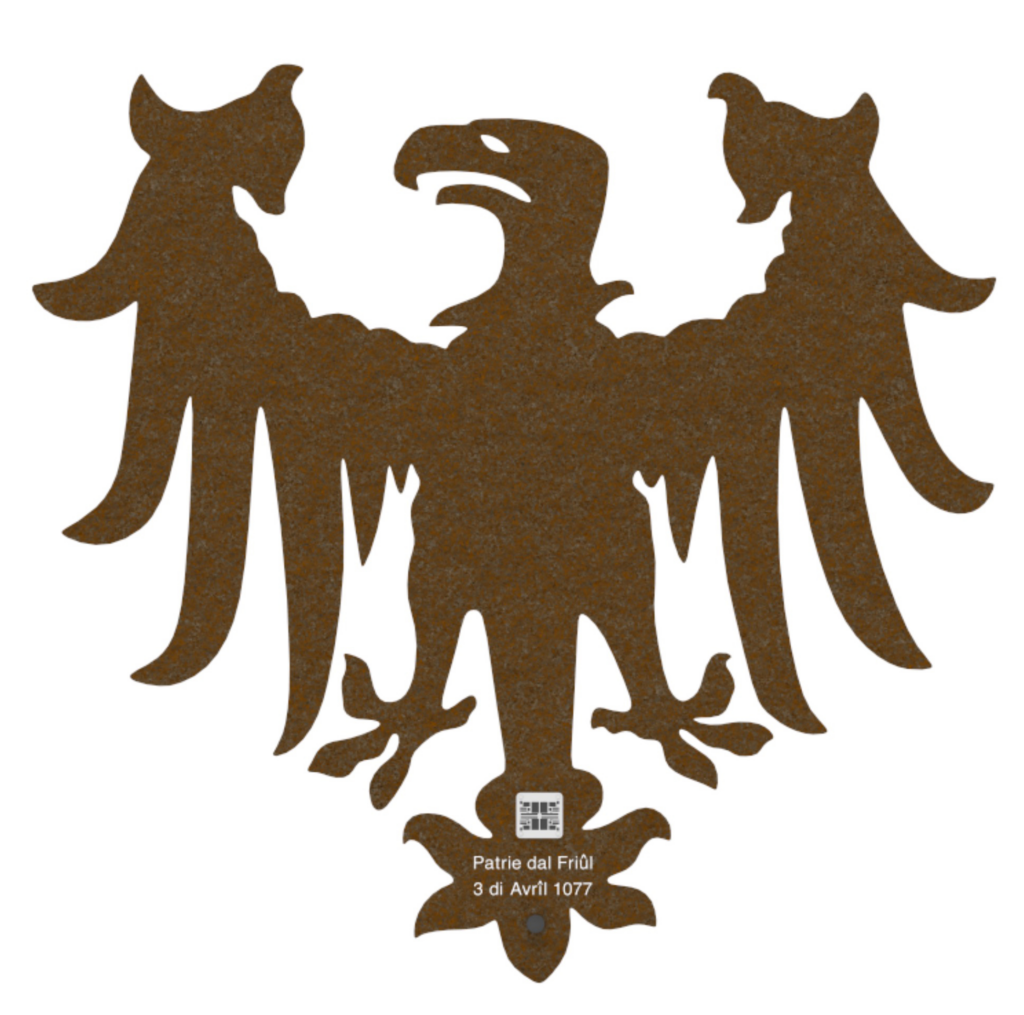
Borella’s art piece sums up on a corten steel plate the identifying power of the eagle featured on the ancient medieval banner used by Patriarch Bertrand in 1350. That is the oldest specimen of the flag of Friuli, one of the longest-lived flags in the world, which can still be admired in the Udine Cathedral Museum. It is a banner officially recognised in its modern version by Regional Law 27/2001, which has remained an emblem of autonomy and cultural roots over the centuries.
“Un’Aquila in Comune” is a project funded by Regional Law 7/2024 for the 2025 Fieste de Patrie dal Friûl.
The initiative has been organised and promoted in cooperation with City ADV.
The Flag of Friuli
The flag of Friuli, used by the Patriarchal State of Aquileia, is an historical banner of rare longevity. Its historical roots date back to the Patriarchal State of Aquileia. The origin of the banner is closely linked to the emblem of the eagle, already associated with the city of Aquileia in Roman times. Numismatic findings show that the eagle was in use in Friuli as early as the 13th century as a distinctive symbol of Aquileian power. The oldest example of the banner, dating back to the early 14th century, is on display in the Museum of the Cathedral of Udine. It depicts a golden eagle on a blue-grey silk cloth that was part of the grave goods of Patriarch Bertrand of Saint Geniès.
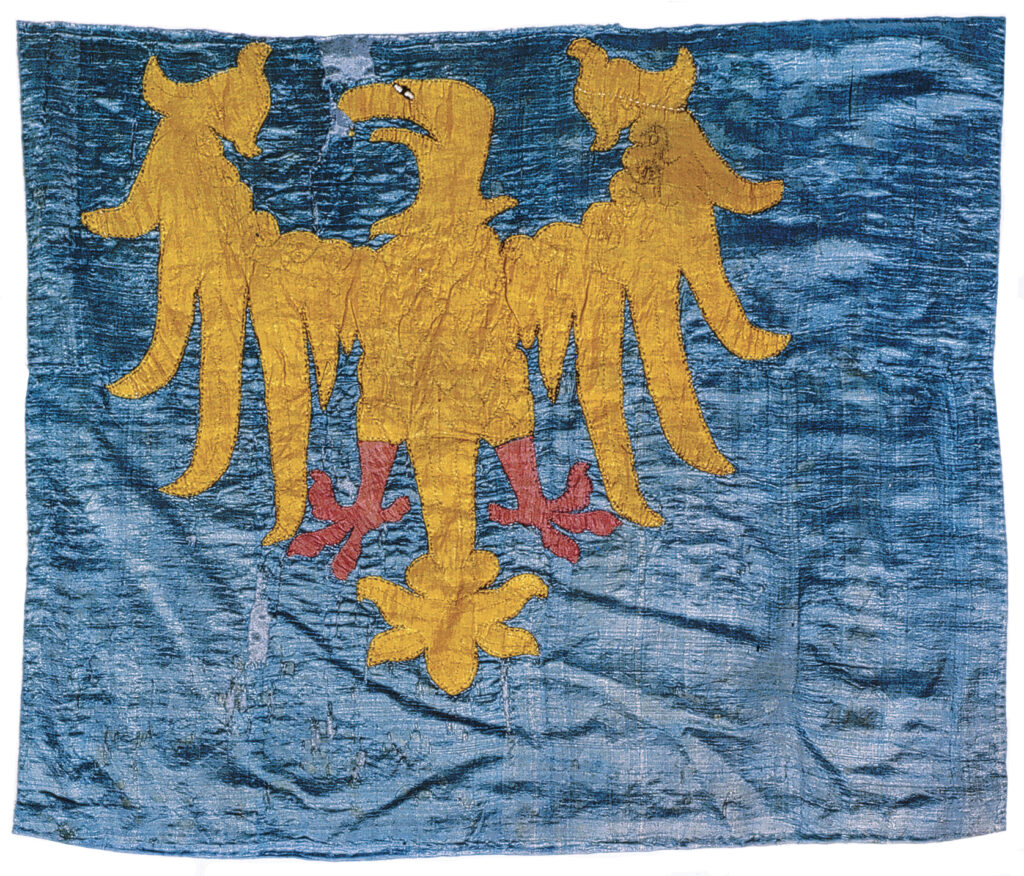
The current flag of Friuli draws inspiration from the ancient banner and is officially recognised by the Friuli-Venezia Giulia Autonomous Region It is composed of a rectangular standard with at its centre a golden eagle set in a sky blue field. The municipalities included in the territory of protection of the Friulian linguistic minority exhibit the flag in public places. Every year, the main occasion for its official presentation is on 3rd April, the anniversary of the birth of the Patriarchal State of Aquileia.
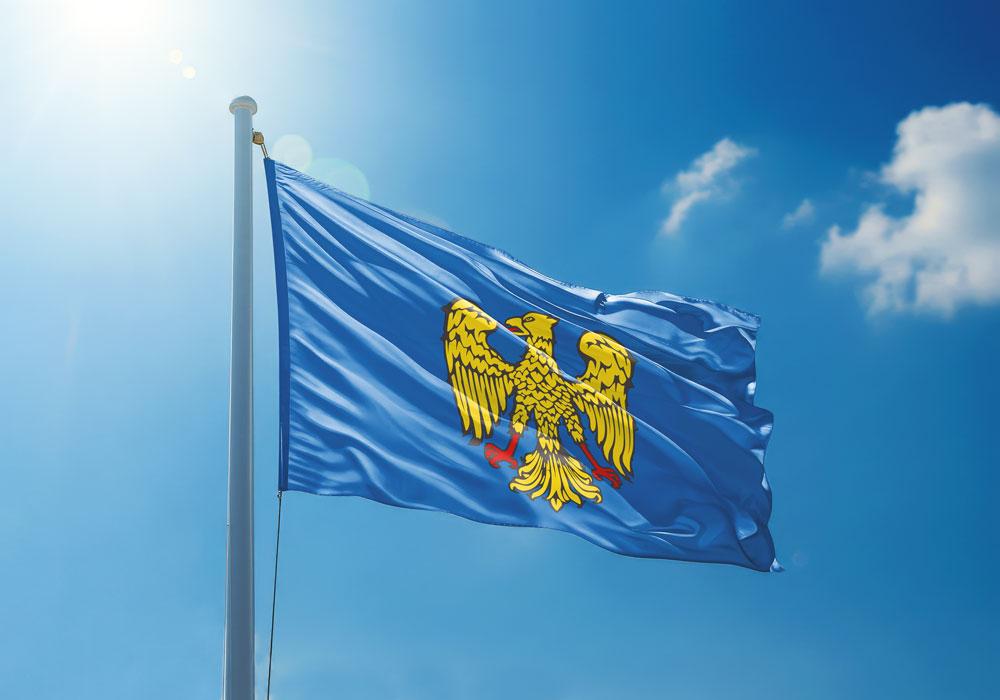
The Parliament of Friuli
The Parliament of Friuli represents one of the oldest and most significant assembly institutions in Europe. The first written evidence of Friulian parliamentary activity dates back to the 13th century. Its composition was quite original as it included, alongside the representatives of the clergy and nobility, even those of the town communities, which shaped it as a model of social and political balance in an era dominated by feudal power.
-
DISCOVER MORE
Among the main functions of the Friulian Parliament were the approval of laws, the management of military and fiscal resources, international relations and the resolution of internal disputes. From the 13th century, the Parliament began to assume ever-expanding powers. In the 14th century, it became the highest legislative assembly and the supreme criminal and administrative court, limiting the power of the Patriarch himself, in a sort of ante-litteram constitutional state.
With the fall of the Patriarchal State and the annexation of much of Friuli to the Republic of Venice in 1420, the Parliament continued to meet but gradually lost its relevance. It was Napoleon Bonaparte who eventually suppressed it in 1805. This makes it one of the oldest and longest-lived parliaments in Europe.
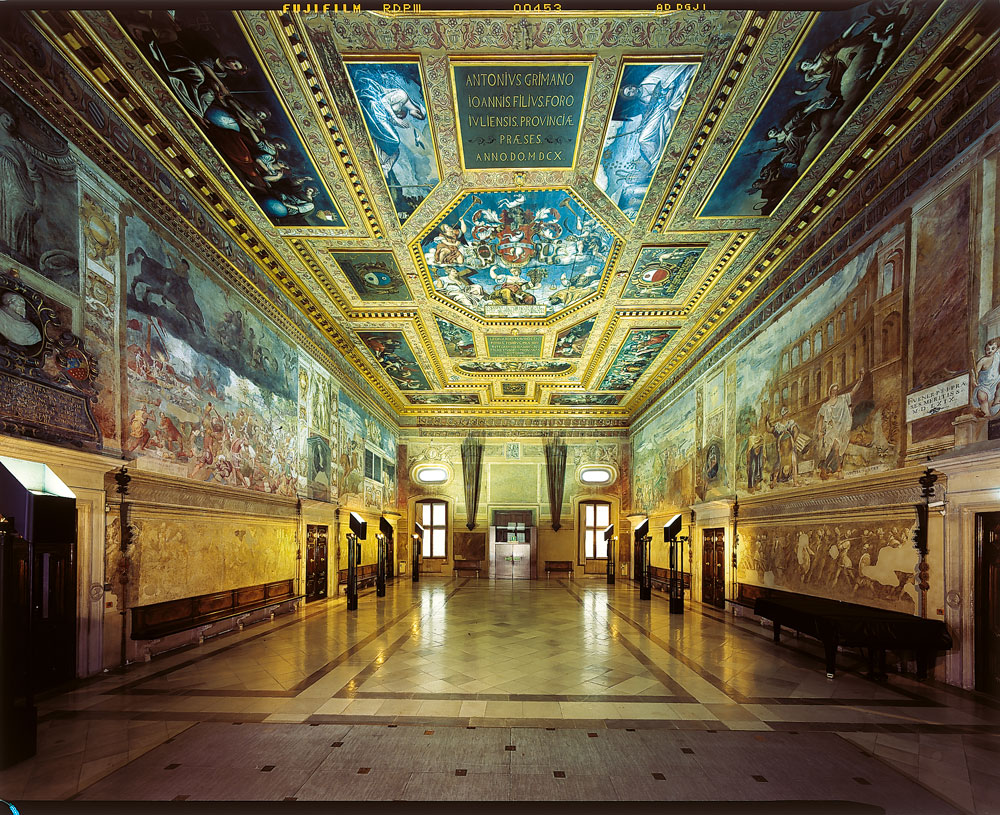
A region in the heart of Europe
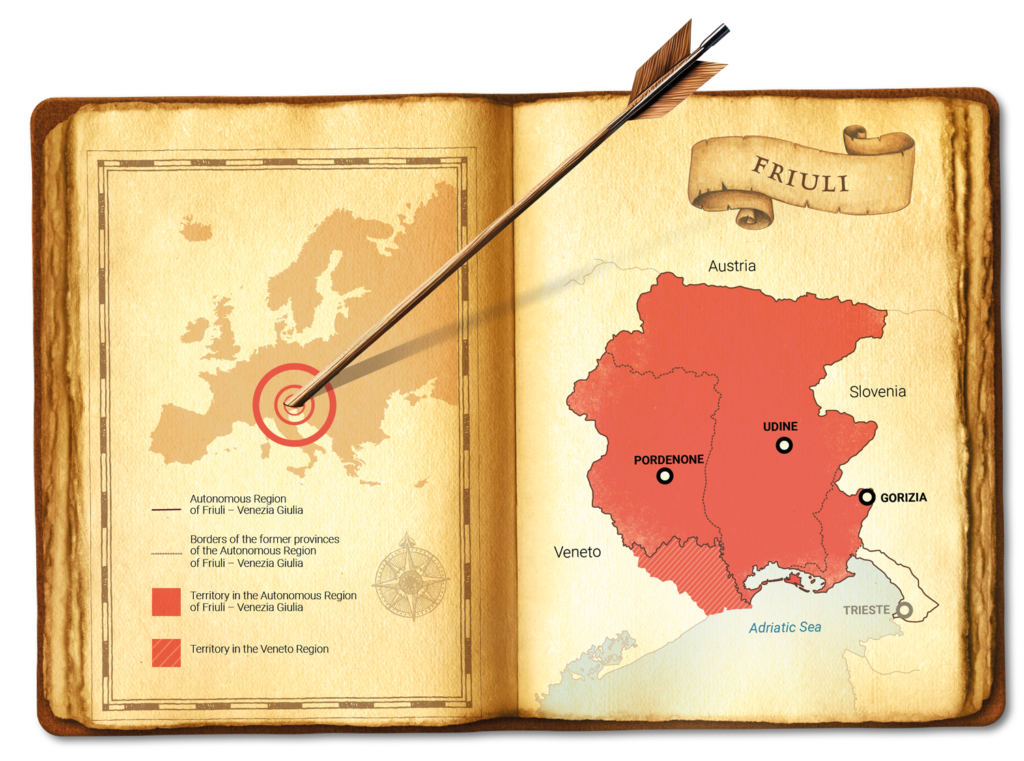
Friuli is a region located in the extreme northeast of the Italian Republic, on the border with Austria and Slovenia. It covers an area of about 8,000 sq km and is bounded on the west by the River Livenza and on the east by the river Timavo. Friuli is currently included in the administrative region of Friuli-Venezia Giulia (in the former provinces of Gorizia, Pordenone and Udine), with the exception of the district of Portogruaro, which is included in the Veneto region, specifically the province of Venice. Friuli is comprised of a wide plain and a mountain range that surrounds it, namely the Carnic Alps and a short stretch of the Julian Alps.
-
DISCOVER MORE
Inhabited in ancient times by pre-Celtic and Celtic populations, it was later conquered by the Romans. Starting from Aquileia, they made it a focal point for the maintenance and development of their dominance on the European continent. After the fall of the Roman Empire, Friuli witnessed years of invasions and raids, and then it became the seat of the first Lombard duchy. With the advent of the Holy Roman Empire, the region took on a strategic role, which culminated in the creation of the Patriarchal State of Aquileia in 1077. This ecclesiastical state ruled Friuli until 1420, when it was conquered by the Republic of Venice. In 1516, with the Treaty of Noyon, the Serenissima acknowledged the dominion of the Habsburgs over eastern Friuli.
With the fall of Venice in 1797, the rest of Friuli also became part of the Austrian Empire. It was later annexed to the Kingdom of Italy in 1866 (except for eastern Friuli, which was annexed only in 1919). During the 20th century, Friuli was hit by dramatic events, such as the two world conflicts and the devastating earthquake of 1976. Today, Friuli can boast an excellent level of economic development, with key sectors such as manufacturing, commerce, agriculture and tourism. Its rich history, its four official languages (Friulian, Slovenian, German and Italian), its unique landscapes and its food and wine tradition make it one of the most distinctive regions of Italy.
THE FOLLOWING MUNICIPALITIES HAVE JOINED THE PROJECT “UN’AQUILA IN COMUNE”:
- Aiello del Friuli
- Amaro
- Andreis
- Arba
- Arta Terme
- Artegna
- Attimis
- Bagnaria Arsa
- Barcis
- Basiliano
- Bertiolo
- Bicinicco
- Bordano
- Buja
- Camino al Tagliamento
- Campoformido
- Capriva del Friuli
- Casarsa della Delizia
- Cassacco
- Castelnovo del Friuli
- Cavasso Nuovo
- Cavazzo Carnico
- Cercivento
- Cervignano del Friuli
- Chiopris-Viscone
- Cividale del Friuli
- Clauzetto
- Codroipo
- Colloredo di Monte Albano
- Comeglians
- Cordenons
- Cordovado
- Corno di Rosazzo
- Coseano
- Dignano
- Dogna
- Dolegna del Collio
- Enemonzo
- Fanna
- Fiumicello Villa Vicentina
- Flaibano
- Fontanafredda
- Forgaria nel Friuli
- Forni Avoltri
- Forni di Sopra
- Frisanco
- Gorizia
- Lauco
- Lestizza
- Lignano Sabbiadoro
- Magnano in Riviera
- Maniago
- Manzano
- Martignacco
- Medea
- Meduno
- Mereto di Tomba
- Montenars
- Montereale Valcellina
- Moraro
- Morsano al Tagliamento
- Mortegliano
- Moruzzo
- Mossa
- Muzzana del Turgnano
- Nimis
- Osoppo
- Ovaro
- Pagnacco
- Palazzolo dello Stella
- Paluzza
- Pasian di Prato
- Paularo
- Pavia di Udine
- Pocenia
- Pontebba
- Pordenone
- Porpetto
- Povoletto
- Pozzuolo del Friuli
- Pradamano
- Precenicco
- Premariacco
- Prepotto
- Ragogna
- Ravascletto
- Raveo
- Reana del Rojale
- Remanzacco
- Resiutta
- Rigolato
- Rive D’Arcano
- Rivignano Teor
- Ronchis
- Ruda
- S. Maria la Longa
- San Lorenzo Isontino
- San Martino al Tagliamento
- San Vito al Tagliamento
- San Vito al Torre
- San Vito di Fagagna
- Sedegliano
- Sequals
- Sesto al Reghena
- Socchieve
- Spilimbergo
- Sutrio
- Talmassons
- Tarcento
- Tavagnacco
- Terzo di Aquileia
- Tolmezzo
- Torviscosa
- Tramonti di Sopra
- Tramonti di Sotto
- Travesio
- Treppo Grande
- Treppo Ligosullo
- Tricesimo
- Trivignano Udinese
- Udine
- Valvasone Arzene
- Varmo
- Venzone
- Verzegnis
- Villa Santina
- Visco
- Vito d’Asio
- Zoppola
- Zuglio




